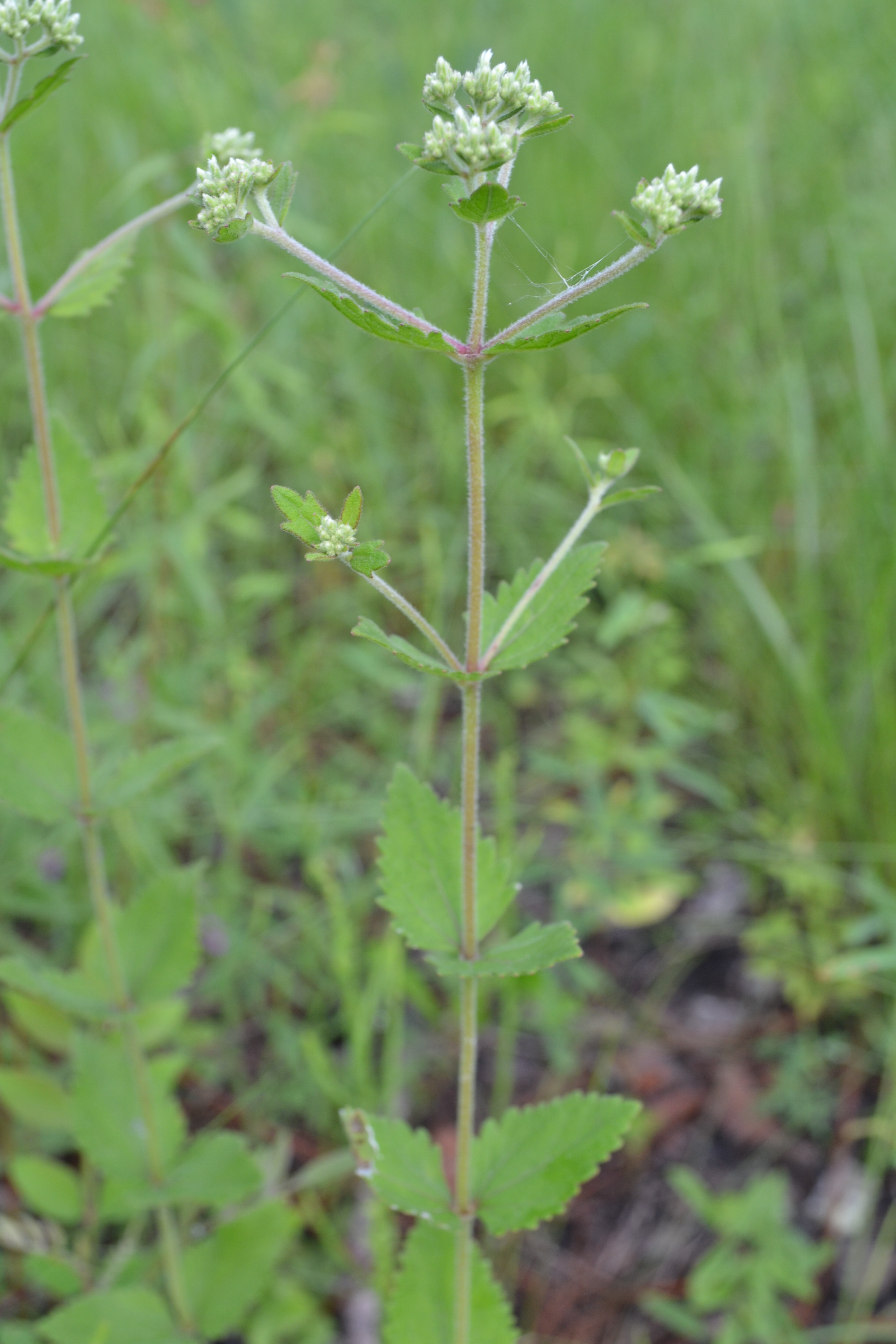Eupatorium rotundifolium
| Eupatorium rotundifolium | |
|---|---|

| |
| Photo was taken by Kevin Robertson | |
| Scientific classification | |
| Kingdom: | Plantae |
| Division: | Magnoliophyta - Flowering plants |
| Class: | Magnoliopsida – Dicotyledons |
| Order: | Asterales |
| Family: | Asteraceae ⁄ Compositae |
| Genus: | Eupatorium |
| Species: | E. rotundifolium |
| Binomial name | |
| Eupatorium rotundifolium L. | |

| |
| Natural range of Eupatorium rotundifolium from USDA NRCS Plants Database. | |
Contents
Description
Common Name: Roundleaf thoroughwort
Distribution
Ecology
It has well-documented anticancer activities against various human cancer cell lines.[1]
Habitat
It is found i river bottoms, creek bluffs, slash pine-palmetto flatwoods, near streams, in open-dry habitats, mixed woodlands, savannas, marshy areas, bottomland woodlands, edges of thickets, edges of titi swamps, open boggy areas, Longleaf pine-wiregrass savannas, and well-drained uplands (FSU Herbarium). It is also found in human disturbed areas such as pinelands that have been clear cut and plowed, roadside edges and ditches, in a drainage ditch, in roadside thickets, powerline corridors, in plowed pastures, and in fire breaks bordering pine flatwoods (FSU Herbarium).
It can be found in areas regularly burned every 1 to 2 years in the winter. It can be found in longleaf pine savanna communities.[2]
Phenology
Seed dispersal
Seed bank and germination
Fire ecology
It is fire-tolerant.[2]
Pollination
Use by animals
Diseases and parasites
Conservation and Management
Cultivation and restoration
Photo Gallery
References and notes
- ↑ Kintzios, S. E. (2007). "Terrestrial plant-derived anticancer agents and plant species used in anticancer research." Critical Reviews in Plant Sciences 25: 79-113.
- ↑ 2.0 2.1 Brewer, J. S. and S. P. Cralle (2003). "Phosphorus addition reduces invasion of a longleaf pine savanna (southeastern USA) by a non-indigenous grass (Imperata cylindrica)." Plant Ecology 167: 237-245.